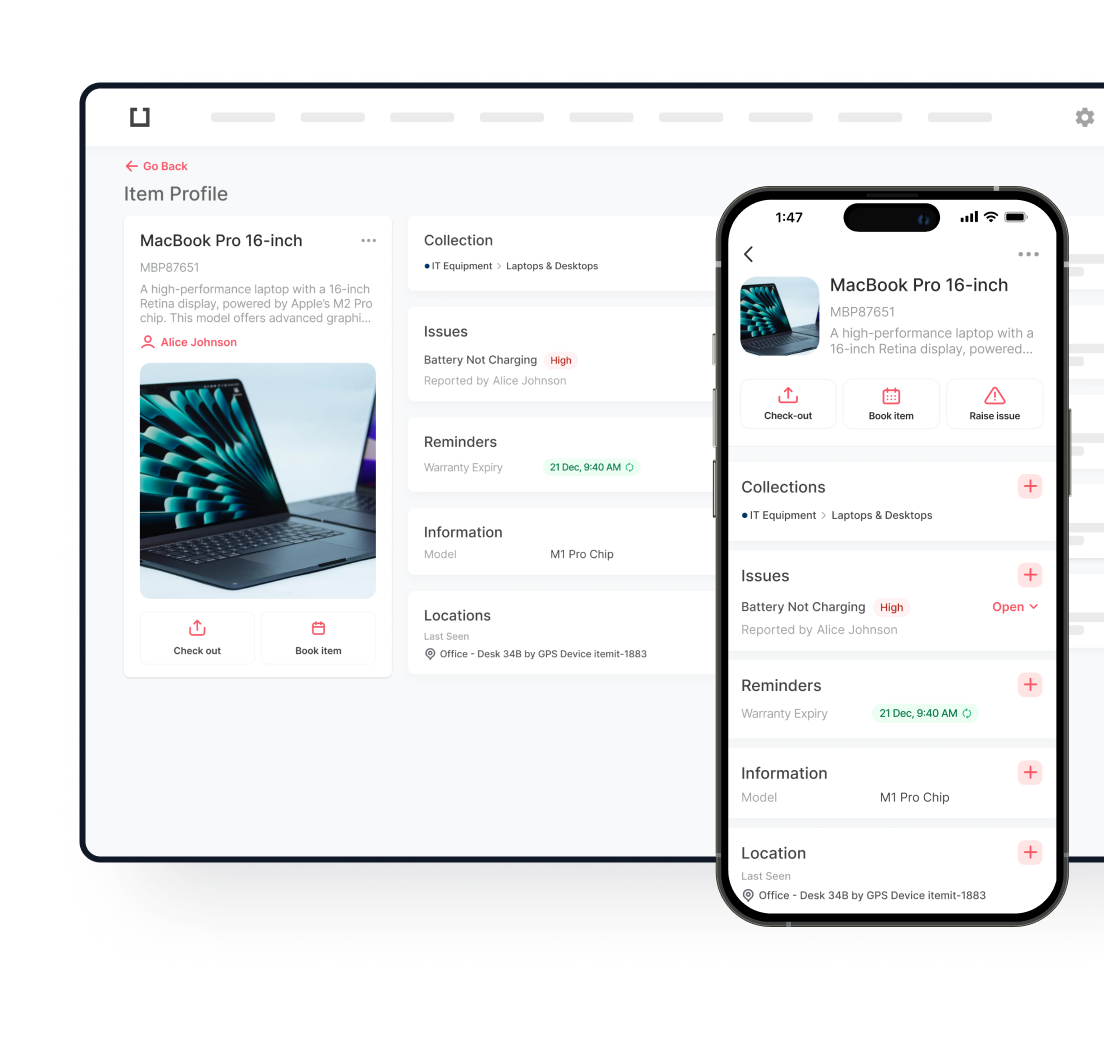
Few events in the fast-paced business climate of today cause greater immediate difficulties than learning you’re low on stock or dealing with an extensive inventory shortage. When items customers need are not accessible, the effects are felt throughout your whole business, touching everything from short-term sales to long-term client loyalty. Modern companies understand more and more that keeping ideal inventory levels is not only a back-office issue but also an important component of general corporate strategy. Sustainable business operations depend on knowing how to both manage and avoid these interruptions as supply chains get more complicated and customer demands for instant availability rise.
What is an Inventory Shortage?
An inventory shortage, commonly referred to as a stockout or stock shortage, occurs when demand for a product exceeds its available supply. Fundamentally, it represents the moment when a business cannot fulfill customer orders because the requested items are unavailable. What does stockout mean in practical terms? It’s the uncomfortable moment when a business must tell customers, “We don’t have what you want.”
What are stock outs beyond their basic definition? They’re distinct from other supply chain challenges in several important ways. Unlike inventory discrepancies (where physical counts don’t match records) or shrinkage (where inventory disappears due to theft or damage), stockouts specifically reflect a failure to maintain sufficient quantities to meet customer demand. They represent not just operational failures but missed opportunities for revenue generation.
The severity of an inventory stockout varies widely depending on factors such as:
- Whether alternatives or substitutes are available
- The typical purchasing frequency of the item
- Customer loyalty and their willingness to wait
- Competitive availability of similar products
While temporary lack of inventory might seem manageable, recurring patterns of unavailability can permanently damage customer relationships and market position. Using buffer stock (additional inventory kept as a safety measure) can help businesses weather unexpected demand spikes or supply interruptions, creating a protective cushion against complete stockouts.
Causes of Inventory Shortages
Inside Job: Internal Triggers
The hunt for what causes stock shortages often leads right back to your operations. The most common internal causes of stock out include:
Forecast Fumbles
Demand prediction isn’t fortune-telling, but it’s close. When your crystal ball gets cloudy—misjudging seasonal trends, new market entrants, or changing consumer preferences—you order too little and pay the price in empty shelves.
Process Bottlenecks
The lag between “we’re running low” and “the new shipment arrived” creates a vulnerability window during which stockouts can occur. Clunky approval processes or understaffed purchasing departments often widen this dangerous gap.
Communication Chasms
When your sales team doesn’t talk to your warehouse team, who doesn’t talk to your purchasing department, inventory requirements fall through the cracks. These departmental silos kill inventory accuracy.
Data Delusions
Making purchasing decisions based on outdated or flat-out wrong inventory information is like driving with your eyes closed. You’ll crash eventually.
Budget Handcuffs
Financial constraints sometimes force businesses to run leaner inventory levels than they should, creating a constant tightrope walk between capital efficiency and stockout risk.
External Pressure Points
Sometimes inventory shortages come from forces beyond your control:
- Supplier Stumbles: Your inventory health depends heavily on your suppliers’ operational stability. Their production problems, financial struggles, or capacity limitations become your empty shelves.
- Transportation Tangles: Weather disasters, labor disputes, port congestion, fuel shortages—countless logistical complications can delay your deliveries and drain your available stock.
- Market Whiplash: Sudden demand surges—perhaps triggered by viral trends, competitor stockouts, or unexpected events like pandemic buying—can rapidly deplete your available inventory without warning.
- Material Scarcity: Manufacturing disruptions upstream eventually trickle down, turning someone else’s component shortage into your finished product shortage.
The difference between periodic and perpetual inventory systems becomes particularly significant when examining stockout causes. Periodic systems, which only update inventory records occasionally, create dangerous information blind spots. In contrast, perpetual systems track inventory changes continuously, allowing for quicker detection of developing shortage situations and more responsive inventory management.

The Business Impact of Stock Shortages
The consequences of inventory stockout situations extend far beyond the immediate lost sale. When businesses find themselves out of inventory on sought-after items, the repercussions include:
Revenue Implications
- Direct sales losses: The most immediate impact is straightforward—customers wanting products that aren’t available represent revenue that walks out the door.
- Cross-selling opportunities vanish: Missing primary products often means losing sales of complementary items that would have accompanied them.
- Long-term revenue depression: Due to reliability concerns, customers who encounter stockouts may permanently reduce their purchasing frequency or order sizes.
Customer Experience Deterioration
- Satisfaction decline: Few experiences frustrate customers more than being unable to purchase items they’ve specifically sought out.
- Loyalty erosion: Repeated availability issues give customers compelling reasons to explore competitive options.
- Negative word-of-mouth: Disappointed customers share their experiences, amplifying the negative impact beyond those directly affected.
Operational Consequences
- Emergency sourcing costs: Addressing stockouts often necessitates expedited shipping, premium supplier charges, or purchasing from more expensive alternative sources.
- Resource diversion: Staff time gets redirected from regular operations to stockout management, creating productivity drains.
- Forecasting complications: Stockout periods create data gaps that compromise future demand forecasting accuracy.
Research consistently demonstrates the severity of these impacts. Studies indicate that retailers typically lose nearly half of intended purchases when customers encounter stockouts, with approximately one-third of these disappointed customers taking their business to competitors. For manufacturers and B2B operations, the consequences can be even more severe, with stockouts potentially triggering contract penalties or relationship terminations.
How to Manage an Inventory Shortage in Real Time
When facing an active shortage inventory situation, immediate action becomes essential. Follow these strategic approaches to minimise disruption:
Immediate Response Tactics
- Conduct rapid inventory verification: Before taking drastic measures, confirm the shortage actually exists through physical counts of affected items.
- Prioritise allocation: Determine which customers or orders should receive priority access to remaining inventory based on relationship importance, contract obligations, or profit potential.
- Activate alternative sourcing plans: Contact secondary suppliers, explore competitor inventory purchases, or investigate temporary substitution options.
- Implement shortage-specific pricing strategies: Consider whether price adjustments might help manage demand during the shortage period.
- Modify minimum order quantities: Temporarily adjust order size requirements to stretch available inventory across more customers.
Communication Strategies
- Proactive customer notification: Contact affected customers before they discover the problem themselves, demonstrating respect for their needs.
- Transparency about timelines: Provide realistic estimates for stock replenishment rather than making overly optimistic promises.
- Alternative recommendations: Suggest comparable products or solutions that might meet customer needs during the shortage.
- Staff alignment: Ensure all customer-facing personnel understand the situation and communicate consistent messages.
- Supplier collaboration: Maintain open communication with suppliers about expediting options and delivery timelines.
Recovery Planning
- Establish shortage tracking mechanisms: Document all aspects of the stockout to facilitate post-incident analysis.
- Develop replenishment sequencing: Create a prioritised plan for stock distribution once new inventory arrives.
- Customer recovery initiatives: Design targeted incentives to re-engage customers negatively impacted by the shortage.
Understanding the difference between periodic and perpetual inventory systems becomes particularly valuable during active shortage management. Businesses utilising perpetual systems can identify exactly when shortages began, monitor real-time inventory levels across locations, and make data-driven decisions about allocation—advantages that periodic systems cannot provide during crises.

Strategies to Prevent Inventory Shortages
While effectively managing active shortages is important, implementing proactive measures to avoid stock outs creates significantly more business value. Consider these preventative approaches:
Forecasting and Planning Improvements
- Statistical forecasting enhancement: Utilize advanced forecasting methodologies incorporating historical data, seasonal patterns, and market trends.
- Collaborative planning: Establish regular communication channels between sales, marketing, purchasing, and operations to align inventory strategies with business initiatives.
- Scenario planning: Develop contingency plans for various potential disruptions, identifying specific inventory actions for each scenario.
- Demand sensing capabilities: Implement systems that detect early indicators of demand shifts before they impact inventory requirements.
Inventory Policy Optimization
- Safety stock recalibration: Calculate appropriate buffer stock levels based on demand variability, lead time uncertainty, and service level objectives.
- ABC inventory classification: Prioritize inventory management efforts based on product value and turnover rates.
- Order cycling adjustments: Modify reorder frequencies and quantities to balance carrying costs against stockout risks.
- Supplier performance integration: Incorporate supplier reliability metrics into inventory planning, maintaining higher buffers for less consistent vendors.
Technology Enablement
- Inventory management system implementation: Deploy specialised software providing visibility across the entire inventory lifecycle.
- Automated reordering capability: Establish systems that automatically generate purchase orders when inventory reaches predetermined thresholds.
- Data analytics integration: Utilize advanced analytics to identify patterns and predict potential shortage situations before they occur.
- Supply chain visibility tools: Implement technologies providing real-time insights into inventory movement throughout the supply chain.
An effective asset tracking system represents a particularly powerful preventative measure against stockouts. By maintaining continuous awareness of inventory location, condition, and status throughout facilities and distribution networks, these systems eliminate the information gaps that frequently contribute to unexpected shortages.
How to Use Asset Tracking to Reduce Stock Shortages
Modern asset tracking systems provide unprecedented visibility into inventory movements and status, creating multiple pathways to reduce inventory shortage risks:
Real-Time Inventory Visibility
- Location accuracy: Tracking technologies like RFID, barcoding, and QR codes ensure inventory location data remains continuously updated.
- Movement history: Complete movement records highlight patterns that might contribute to shortages, such as recurring transfer delays.
- Status monitoring: Tracking condition and usability status prevents situations where physically present inventory can’t actually fulfill orders.
- Threshold alerting: Automated notifications when inventory approaches critical levels enable preemptive action.
Operational Efficiency Improvements
- Receiving acceleration: Streamlined receiving processes with scanning technology reduces the time between delivery and availability.
- Order picking optimisation: Guided picking paths and verification protocols minimise errors that create phantom inventory.
- Cycle counting enablement: Simplified regular inventory verification replaces disruptive full physical counts.
- Space utilisation enhancement: Better visibility into inventory placement improves storage efficiency and reduces misplacement.
Analytics and Intelligence
- Dwell time analysis: Identifying inventory that remains stationary for extended periods prevents overlooked stock.
- Velocity monitoring: Tracking how quickly specific items move through the supply chain helps anticipate potential shortages.
- Shrinkage pattern detection: Highlighting unusual inventory disappearance patterns helps address sources of unplanned depletion.
- Predictive shortage indicators: Developing early warning systems based on historical patterns of pre-shortage conditions.
The concept of asset utilisation goes beyond simple inventory tracking to guarantee the best use of resources and prevent shortages. Based on expected demand, this entails carefully distributing inventory across your network, transporting items proactively instead of reactively, and making sure capital spent on inventory yields the best return through availability at the right locations.

Common Mistakes That Lead to Stockouts
Even businesses with sophisticated inventory practices frequently make specific errors that create stock shortage vulnerability. Recognising these common pitfalls is the first step toward avoiding them:
Strategic Missteps
- Single-source supplier dependency: Relying exclusively on one supplier for critical items creates significant vulnerability to that supplier’s operational challenges.
- Inadequate risk assessment: Failing to identify which products pose the greatest stockout risk leads to misallocated prevention efforts.
- Reactive rather than proactive mindset: Addressing inventory issues only after they occur rather than implementing preventative measures.
- Cost-focused rather than service-focused inventory policies: Excessive emphasis on inventory reduction without considering availability implications.
Operational Failures
- Poor inventory record accuracy: Allowing physical inventory to diverge from system records creates false confidence in availability.
- Inadequate staff training: Insufficient employee understanding of inventory management principles and procedures.
- Manual process reliance: Continuing to use error-prone manual methods for critical inventory tasks despite available automation.
- Communication silos: Failing to share critical inventory information across departmental boundaries.
Technology Underutilization
- Obsolete systems: Continuing to use outdated inventory management technologies incapable of supporting modern requirements.
- Insufficient integration: Operating inventory systems disconnected from other business platforms like accounting, sales, and purchasing.
- Limited data utilisation: Collecting extensive inventory data but failing to analyse it for improvement opportunities.
- Resistance to technological advancement: Hesitancy to adopt proven inventory technologies due to change management concerns.
Implementing a comprehensive asset tracking system addresses many of these common mistakes by creating a foundation of inventory accuracy, visibility, and control that naturally prevents the information gaps where stockouts often originate.
Mastering Inventory Management: The Path Forward
The battle against inventory shortages requires both tactical responsiveness and strategic foresight. When you find yourself low on stock or completely out of inventory, the impacts cascade far beyond missing a sale—customer loyalty erodes, operational costs spike, and your competitive position weakens.
Success comes from understanding the root causes of stock out situations and implementing targeted preventative measures: demand forecasting, safety stock optimisation, supplier diversification, and technological enablement. When shortages occur despite these efforts, having clear response protocols helps minimise the damage.
Perhaps most importantly, view each stockout as a learning opportunity. By analysing what went wrong and systematically addressing those weaknesses, you transform challenging inventory experiences into future competitive advantages—keeping shelves stocked and customers satisfied when your competitors cannot.

Try itemit
Choose a better way to track
your assets.
Start your free 14-day trial now!

Keep Learning
itemit Blog
Tips, guides, industry best practices, and news.
The Ultimate Guide to RFID Inventory Management
Discover the beginner’s guide to RFID inventory management technology. Learn how to improve accuracy, streamline stock tracking, and boost efficiency today!
A Guide to the Different Types of Inventory Management
Discover the different types of inventory management systems and how each can improve efficiency and accuracy in managing your business inventory.
Understanding the Inventory Tracking Process and Its Importance
Learn about the inventory tracking process and its importance. Discover how it helps improve efficiency, accuracy, and overall business management.


